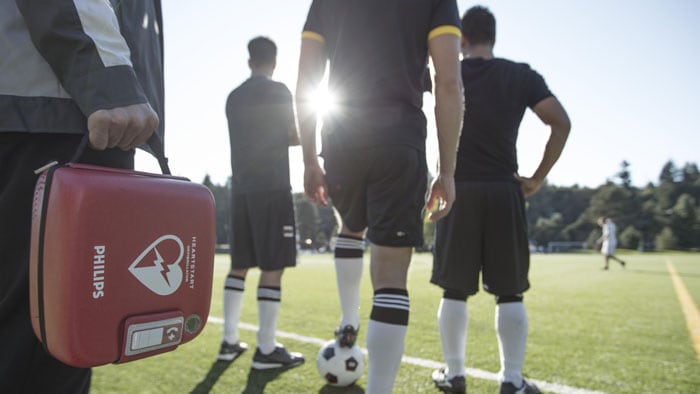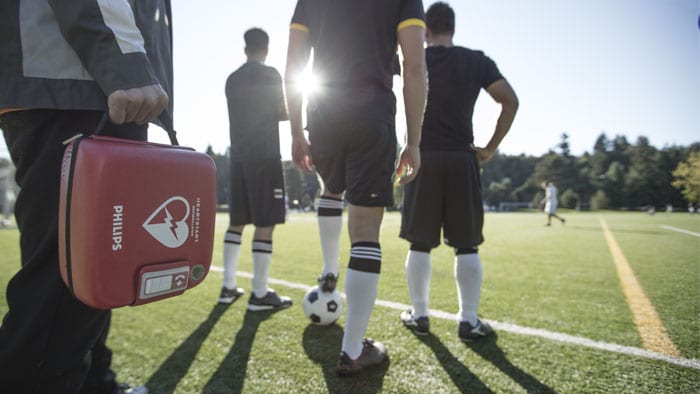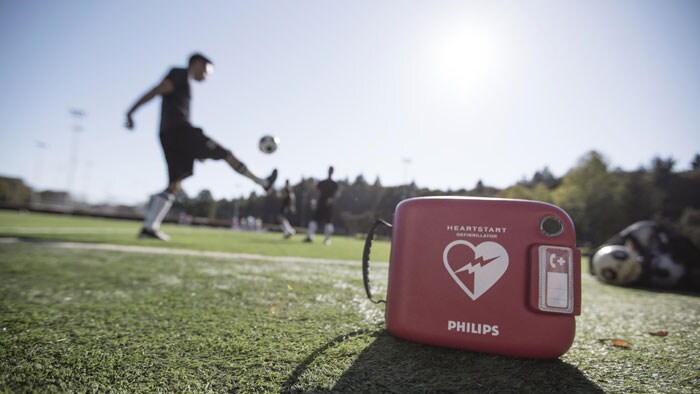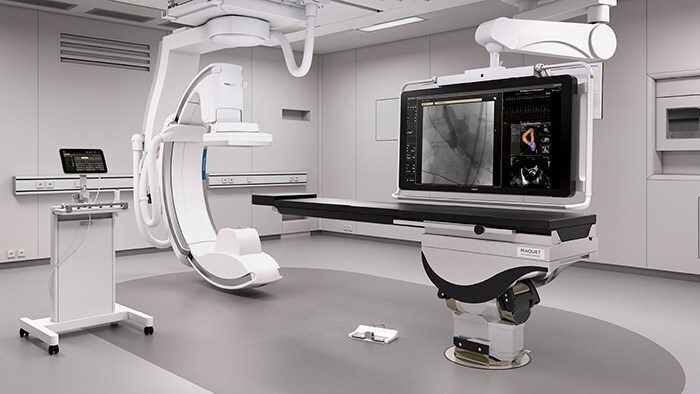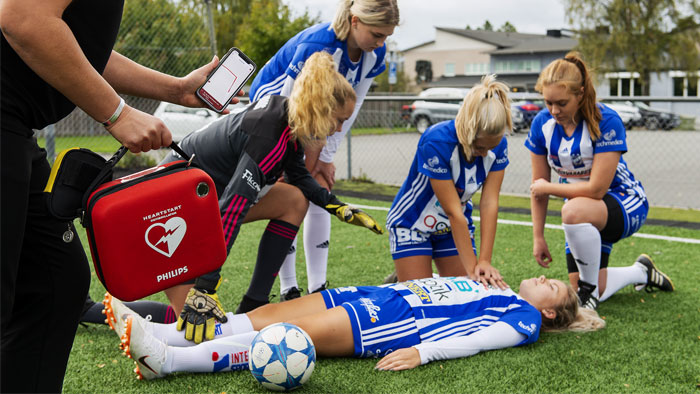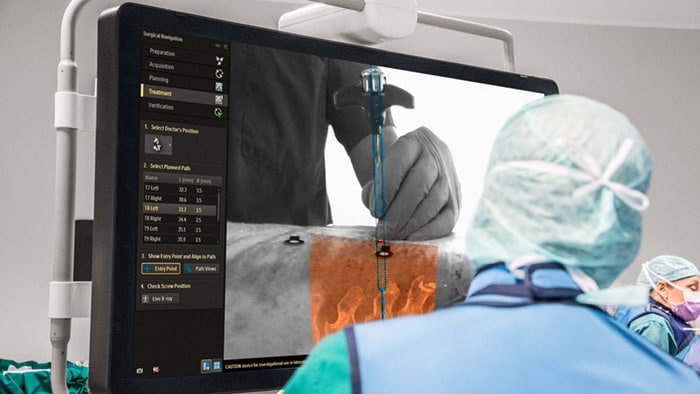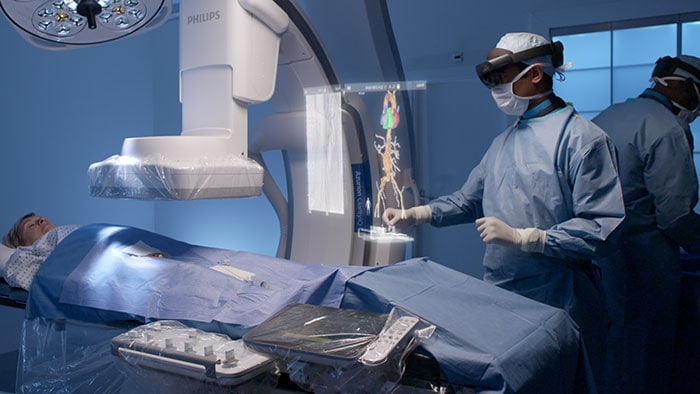When someone suffers a stroke, every second counts. Medical specialists from various disciplines work together to get a patient from the ambulance bay to the appropriate treatment as soon as possible. That’s why Philips, together with Karolinska University Hospital, is developing a communication tool that allows specialists to exchange patient information even quicker. Tiago Moreira, a neurologist at Karolinska, thinks the tool holds great promise: “We want to make sure that everyone has the right information at their fingertips, so that we are all prepared to give the patient the fastest and best possible care.” Every year, more than 900 patients with stroke are treated at Karolinska University Hospital. When a patient arrives at the hospital, restoring blood flow and salvaging brain tissue are the first concern. “Keeping the door-to-treatment time as short as possible is one of our top priorities,” says Dr. Moreira. “We know from scientific studies that stroke patients have a larger chance of being able to live independently after three months if they are treated more quickly.”
We know from scientific studies that stroke patients have a larger chance of being able to live independently after three months if they are treated more quickly.
Dr. Tiago Moreira
Neurologist at Karolinska University Hospital
The need for cross-functional collaboration
To ensure prompt care for stroke patients, Karolinska focuses on cross-functional collaboration. As soon as the patient arrives at the hospital, various types of specialists and caregivers are lined up to get the patient to the right treatment: from stroke nurses to CT nurses, neuroradiologists and stroke neurologists. “We all rely on each other for the right patient information,” says Dr. Moreira. “For example, we need to know the expected time of arrival of the patient, the specific stroke symptoms, and the medication that the patient is on. The easier it is for us to share information like that, the quicker we can help a patient. That’s how the idea for an app-based communication tool came about.”
Facilitating information exchange
At Karolinska, Dr. Moreira leads a multidisciplinary research team that is involved in the development of the tool. The project is part of a wider innovation partnership with Philips, aimed at developing innovations that enhance the value of care and patient experiences. All stakeholders were invited by Philips to provide input for the tool: first to identify the opportunities, next to give feedback on the first paper prototypes, and later to give feedback on functional prototypes. Dr. Moreira: “We are aiming for a tool that suits every team member in the best way, providing them with the right information at the right time. That’s why we involved them from the start. Thanks to a process of continuous improvement, we now have a working prototype from Philips that we can test further.” Dr. Moreira: “The tool, which works on a smartphone, makes it easy to disseminate relevant patient information among multiple colleagues at the same time. For example, when I get a call from the ambulance and we agree to take over the stroke patient, I can send a notification to the stroke nurse, wherever she is, so she knows when the patient is expected to arrive at the ambulance bay, when the patient got sick, and how severe the stroke is. At the same time, the CT nurse will also get a notification to get the CT lab ready for the patient.”
The tool, which works on a smartphone, makes it easy to disseminate relevant patient information among multiple colleagues at the same time.
Dr. Tiago Moreira
neurologist at Karolinska University Hospital
Data are shared in a safe and secure way, and only authorized persons have access to the tool. As an extra precaution, all patient information is anonymized in the prototype version of the tool.
Starting a clinical study
So far, Dr. Moreira’s team has done extensive pilot tests with an actor to see how the tool works. “Our first experiences have been very encouraging,” says Dr. Moreira. As a next step, a clinical study is now underway. A baseline study with 80 patients has just been completed. Using a real-time tracking system, the study measured the time it normally takes to get patients from one step in the stroke care flow to the next, without the stroke communication tool. Similar time measurements will now be repeated in the clinical study. This time, staff will use the stroke communication tool to share information. “We expect to see a positive impact of the tool,” Dr. Moreira says. “Our ultimate goal is to get patients to the right treatment as soon as possible.” Learn more about the innovation partnership between Karolinska University Hospital and Philips
Dela på sociala medier
Ämnen
Författare
Lisa Pernbrink Brand & Communications Manager Business Marketing Health Systems, Philips Nordic
You are about to visit a Philips global content page
Continue





